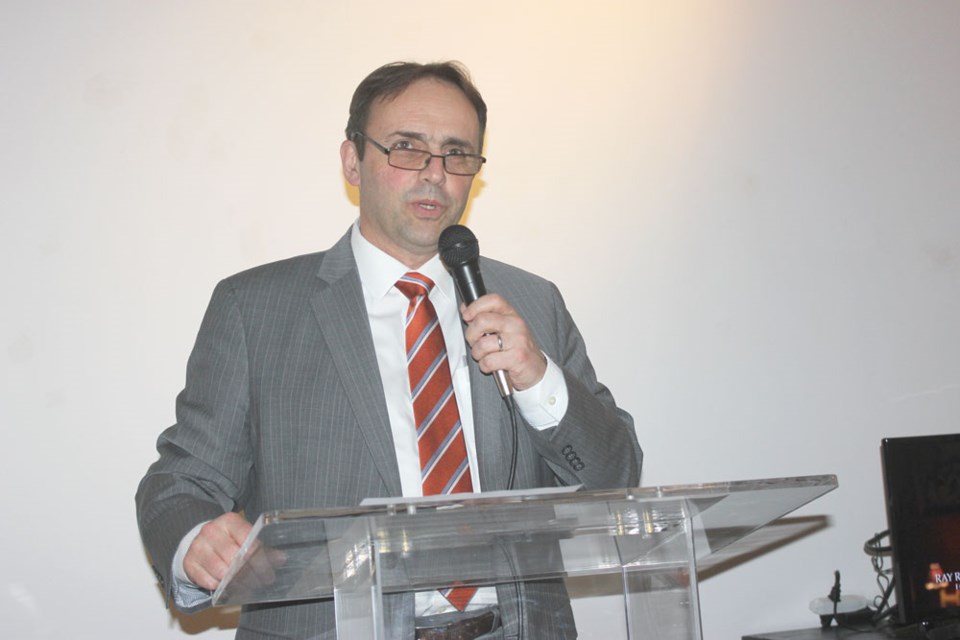The current exhibit inside the Estevan Art Gallery and Museum’s (EAGM) Gallery No. 2 chronicles events that led up to the birth of Canada.
Dr. Dean Oliver from the Canadian Museum of History was in Estevan on Friday night to talk about the exhibit, 1867: Rebellion and Confederation. Panels document some of the moments prior to confederation.
Oliver noted it’s a smaller, travelling version of the exhibit that is on display at the Canadian Museum of History.
“We have been doing this for very many years now, travelling shows across the country to share the knowledge of our curators and the things that we have, both within the borders of Canada and beyond its borders,” said Oliver.
The museum also develops partnerships with other institutions, such as the EAGM, offers virtual exhibitions and creates publications. But he believes the museum is likely best known for its travelling exhibits.
Those exhibits will be moving around the country throughout the year, he said, and they depict significant and unique characters, events and moments in Canadian history.
The 1867: Rebellion and Confederation exhibit not only documents Canada’s birth as a country 150 years ago, but it looks as far back to 1837, and the events that led up to confederation.
“It takes you, as you follow through the panels, through what were called the rebellions of 1837 and 1838, followed by the somewhat unlikely alliance of francophone and anglophone reformist politicians, some violent anti-reform riots in Montreal, and the very, very slow, torturous process of debate and negotiation that led to the leap forward for self-government in what would soon become the provinces of Ontario, Quebec, Nova Scotia and New Brunswick,” said Oliver.
It also provides some information on the fathers of confederation, including John A. Macdonald, who was the first prime minister of Canada; George Brown, who Oliver said argued successfully to unite colonies together under a banner to which other provinces and territories would join; and George-Étienne Cartier, who played a key role in persuading French Canadians to join Canada.
The exhibit is part of the EAGM’s celebrations for Canada’s 150th birthday.
Also at the EAGM is a touring video exhibit from the Yorkton Film Festival’s 2016 Golden Sheaf Awards. It showcases videos that won or were nominated for awards last year.
Categories represented include aboriginal, multi-cultural, LGBTQ, nature and the environment, health, sport, spotlight on the news, the Saskatchewan connection, comedy and arts and culture.




